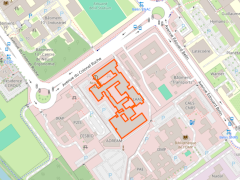Stage
LoRa-based systems
Date de publication
23.11.23
The progress in miniaturization techniques for electronic circuits is still advancing with the effect of an upcoming tidal increase both in the number of networked objects and in the amount of generated information traffic. Wireless low power mesh networks have been the first embodiment of such technological development, with short range and lossy wireless links. With some low power applications requiring very sporadic communications and unbounded communication delays, the use of low power long range communications results as more energy-efficient, thus removing the need for relaying capabilities. As further consequence, processing units can be safely resized, thus allowing very cheap circuitry to be used for such applications. Based on cellular-type architectures, Low Power Wide Area Networks (LPWANs) aim to provide long range connectivity on the top of unlicensed spectra, thus easing their deployment at a global scope. Among LPWANs, Long Range (LoRa) networks targets several application needs, thus resulting as the most flexible in terms of offered communication modes. Nonetheless, to achieve a fair use of the unlicensed spectrum among concurrent operators and/or LPWAN technologies, the radio access is policed through duty cycle limitation to be hard-coded on end-devices. As matter of fact, LoRa is a novel technology, that has triggered research studies about network performance. The deployment of LoRa networks in smart cities can be beneficial for many services, including e-health ones, where data related to patients have to be dispatched towards a collection point able to take decisions (alerting patients and/or their physician). To do so, the reliability of the LoRa networks should be assessed, together with their expected capacity.












